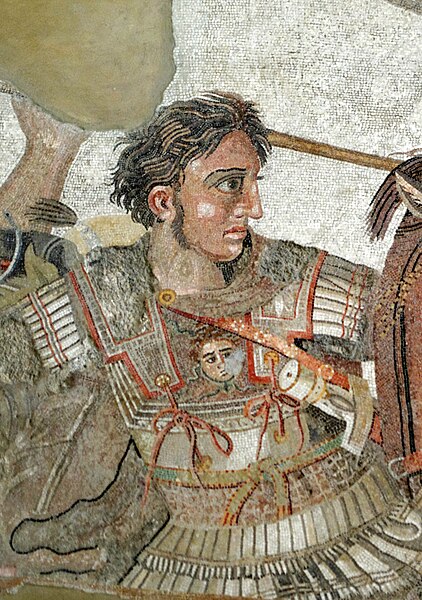Greco-Buddhism or Graeco-Buddhism denotes a supposed cultural syncretism between Hellenistic culture and Buddhism developed between the 4th century BC and the 5th century AD in Gandhara, in present-day Pakistan and parts of north-east Afghanistan. While the Greco-Buddhist art shows clear Hellenistic influences, the majority of scholars do not assume a noticeable Greek influence on Gandharan Buddhism beyond the artistic realm.
Gautama Buddha in Greco-Buddhist style, 1st–2nd century AD, Gandhara (Peshawar basin, modern day Pakistan).
"Victory coin" of Alexander the Great, minted in Babylon 322 BC, following his campaigns in ancient India. Obverse: Alexander being crowned by Nike. Reverse: Alexander attacking King Porus on his elephant. Silver. British Museum.
The Hellenistic Pataliputra capital, discovered in Pataliputra, capital of the Maurya Empire, dated to the 3rd century BC.
The Greco-Bactrian city of Ai-Khanoum (c. 300–145 BC) was located at the doorstep of ancient India.
In classical antiquity, the Hellenistic period covers the time in Mediterranean history after Classical Greece, between the death of Alexander the Great in 323 BC and the death of Cleopatra VII, followed by the emergence of the Roman Empire, as signified by the Battle of Actium in 31 BC and the conquest of Ptolemaic Egypt the following year. The Ancient Greek word Hellas was gradually recognized as the name for Greece, from which the word Hellenistic was derived. "Hellenistic" is distinguished from "Hellenic" in that the latter refers to Greece itself, while the former encompasses all ancient territories under Greek influence, in particular the East after the conquests of Alexander the Great.
Hellenistic period
The Nike of Samothrace is considered one of the greatest masterpieces of Hellenistic art.
Alexander fighting the Persian king Darius III. From the Alexander Mosaic, Naples National Archaeological Museum.
Alexander's empire at the time of its maximum expansion.








